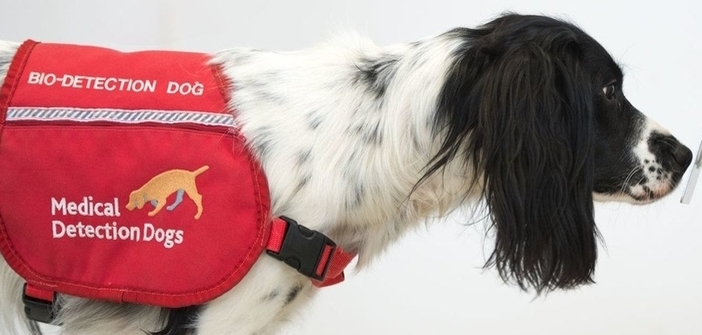Member of Parliament Loïc Dombreval, a trained veterinarian, visited the Alfort Veterinary School in recent days to discuss with Professor Dominique Grandjean the “Nosais” experiment, which involves using dogs’ sense of smell to detect Covid patients.
“The initial results are promising. Dogs are incredible!” he stated after the visit, while still urging caution: “There is still a lot of work for Professor Dominique Grandjean to scientifically solidify his study, but the facts are clear: certain trained dogs can detect sweat from a Covid patient. Let’s help this discovery be applied concretely.”
Professor Dominique Grandjean agreed to share the progress in training the dogs, as well as the potential applications of this screening methodology if the trial proves successful.*
How did you come up with the idea of training police dogs to detect the new coronavirus?
We started with a concept that has already been initiated for some time in France and internationally: the Nosaïs. This concept aims to develop the use of a dog’s sense of smell in the early detection of proliferative chronic diseases (cancers), degenerative, or progressively developing diseases.
I was focusing on bladder cancer screening when Covid-19 arrived. I thought, “Why couldn’t this work with a virus?” and the idea of training dogs to detect the new coronavirus was born.
For the samples, we had to choose between tears, feces, urine, and sweat. We finally opted for compresses placed under the patients’ armpits, to collect sweat without the possibility of passive contamination.
How is the training of the dogs to detect a positive Covid-19 sample conducted?
We work with two types of dogs: explosive detection dogs and firefighter dogs that search for people in distress. The second group needed an additional 15 days to learn to work differently, while the first group was already familiar with detecting about forty odors.
To train the dogs, we let them sniff four samples without direct contact, three of which are negative and one positive. When a dog recognizes the scent of a positive sample, it communicates the information to its handler, who then rewards it, encouraging it to repeat the exercise.
Today, we have a success rate between 96% and 100%. We are multiplying the exercises to achieve reliable results, but we can already state that Covid-19 indeed has a specific smell!
These initial results are very encouraging! What comes next?
Now, we will begin a phase to validate our results.
For the next phase of the experiment, we will have the dogs sniff five samples without informing the handler if there’s a positive sample in the batch or not.
This is a way to test the dog’s skills without the handlers inadvertently influencing them. This influence can be completely unintentional: a tick or other cue alerts the dog, which modifies its behavior accordingly during the exercise.
During this phase, we may get more false positives or negatives. But after, if the results are conclusive, we will alert the authorities who will decide if and how they wish to implement this type of screening.
Will people soon be able to be screened for Covid-19 by a dog? If so, where?
If our trial is validated, half a dozen countries are interested in promoting this screening method in airports.
This would be particularly beneficial in some third world countries that lack the means for the PCR machines used in France to detect Covid-19 and other diseases.
We can also imagine a waiting room where compresses are placed under people’s armpits for 10 minutes before conducting quick, non-intrusive, and low-cost screenings.
But even in France, this screening method would have many merits! To carry out 500,000 tests per week as planned, it would take 134 weeks, or two and a half years, to test every French person just once.
However, I do not allow myself to think about the possible applications of this protocol, as it is not my field. For my part, I can simply develop this screening method and promote it around me!


